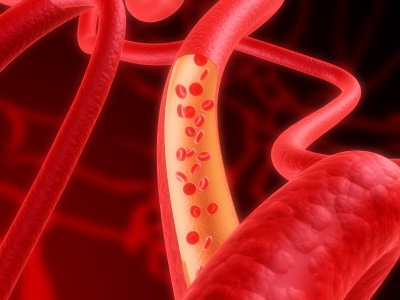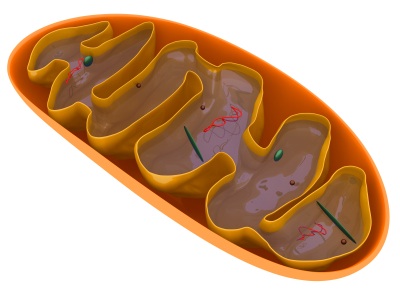Enzyme points down Hedgehog’s path
The Hedgehog (Hh) signaling pathway is essential for embryonic development. While the regulation of pathway activity is not fully understood, a family of enzymes called inositol kinases may be involved.
Susan Wente, Ph.D., and colleagues investigated the role of one such inositol kinase – IP6K2 – in both developing zebrafish embryos and cultured mammalian cells. In the Nov. 16 Proceedings of the National Academy of Sciences, they reported that loss of IP6K2 led to malformations in the craniofacial structures and other body segments of developing zebrafish, as well as defects in neural crest cells (embryonic cells that give rise to several body tissues) and slow muscle development. Inhibition of this enzyme also inhibited signaling through the Hh pathway, and restoring enzyme levels reversed the effects of IP6K2 depletion.
As abnormal Hh signaling is involved in developmental defects and many types of cancer, inhibiting IP6K2 activity might represent a new therapeutic avenue for disorders linked to aberrant Hh signaling.
— Melissa Marino
Low literacy ups death risk
Low health literacy is common and associates with a higher risk of death in patients with end-stage renal disease, Kerri Cavanaugh, M.D., M.H.S., and colleagues found.

iStockphoto.com
The investigators followed 480 chronic hemodialysispatients from 77 dialysis clinics. They found that 32 percent of the patients had limited (below 9th grade reading level) and 68 percent had adequate (at or above 9th grade reading level) health literacy. Limited health literacy associated with a higher risk of death, even after adjustment for age, sex, race and diabetes.
With about 26 million people in the United States with chronic kidney disease, it is critical to identify hemodialysis patients who have a higher risk of death and customize therapies to reduce this risk, the investigators write.
Their findings in the November Journal of the American Society of Nephrology suggest that dialysis clinics and providers should evaluate communication strategies and address health literacy in educational print materials and in oral communication.
— Leigh MacMillan
New target for keeping vessels clear
Clotting factors in the blood participate in a complex process to form clots and stop blood flow at sites of vessel damage. Factor XII (fXII) does not appear to play an important role in physiologic clot formation: humans and mice missing the factor do not have abnormal bleeding. But mice missing fXII – or the factor it activates (fXI) – are resistant to experimentally induced thrombosis (clotting that obstructs blood vessels), suggesting that these factors may contribute to pathological thrombus formation.

iStockphoto.com
David Gailani, M.D., and colleagues developed an antibody (14E11) that interferes with the usual activation of fXI by fXIIa (the active form of fXII). In mice, 14E11 prevented experimental thrombosis to a similar degree as total fXI deficiency, and in baboons, 14E11 reduced thrombus formation in tissue grafts.
The findings in the Nov. 11 issue of Blood suggest that fXIIa activation of fXI contributes to thrombus formation. Since fXII deficiency does not impair physiologic clot formation, targeted inhibition of this factor may be an anti-thrombotic strategy with a low risk of bleeding complications.
— Leigh MacMillan
Parkinson’s clues in cell power plants
A standard treatment for Parkinson’s disease, levodopa (L-dopa) provides the brain a dopamine precursor to counteract the disease-related loss of dopamine-producing neurons. However, prolonged treatment with L-dopa often leads to the debilitating side effect of dyskinesias – abnormal or involuntary movements.

iStockphoto.com
To better understand the molecular mechanisms contributing to these dyskinesias, Christine Konradi, Ph.D., and colleagues examined post mortem samples of human putamen, a brain region that regulates movement and is a major target of the neurons lost in the disease. Patients with dyskinesias had significantly reduced DNA levels in the cell’s power plants (the mitochondria) and increased levels of damage to mitochondrial DNA (mtDNA) compared to patients without dyskinesias. Additionally, mtDNA levels in cultured rat neurons were also altered when repeatedly exposed to dopamine and levodopa.
The results in the November issue of Acta Neuropathologica suggest that mitochondrial susceptibility in the putamen may play a role in the development of dyskinesias – and may offer a therapeutic target for avoiding these side effects.
— Melissa Marino
We welcome suggestions for research to highlight in Aliquots. The items should be primary research articles (no reviews, editorials or commentaries) published within the last two months in a peer-reviewed journal. Please send the article citation (PDF if available) and any other feedback about the column to: aliquots@vanderbilt.edu.
Past Aliquots
June 22, 2012
June 8, 2012
May 11, 2012
April 27, 2012
April 13, 2012
March 30, 2012
March 16, 2012













